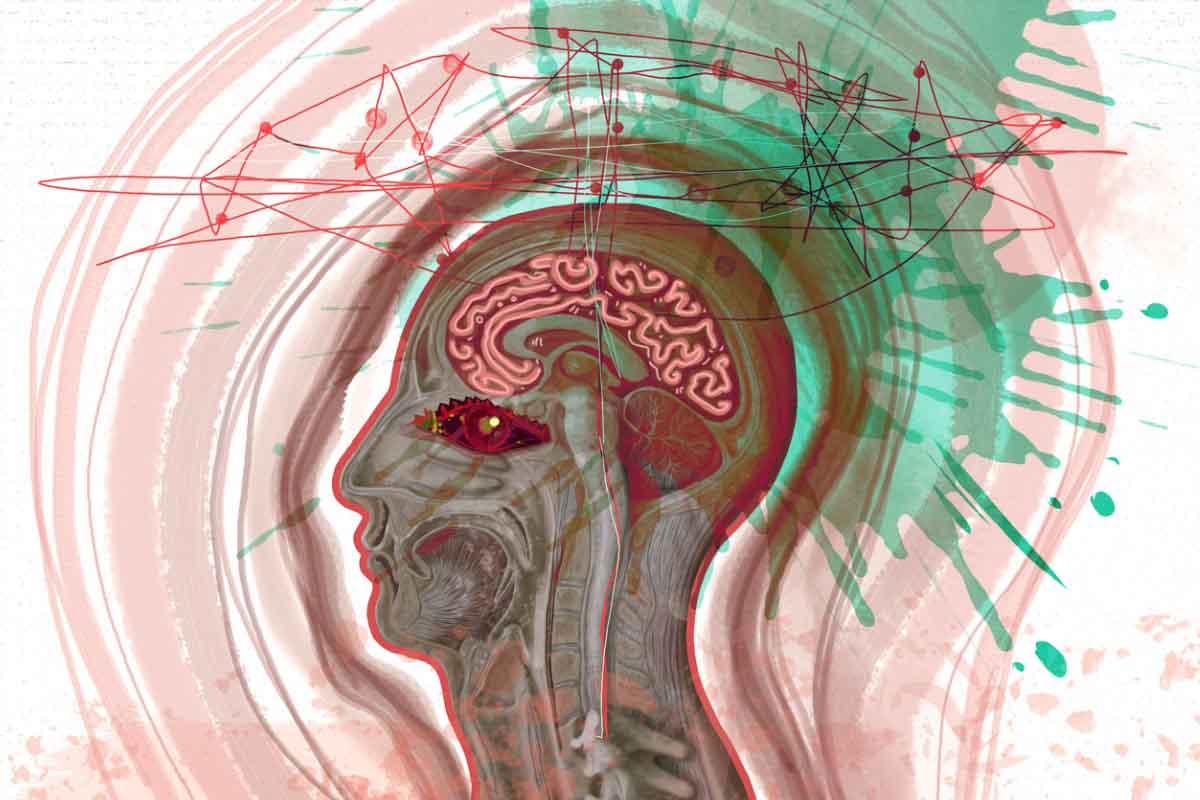
Prim Care Companion CNS Disord 2022;24(4):21cr03176
To cite: Lindegaard VE, Khan S. Schizophrenia-like psychosis in a temporal lobe epilepsy patient following a right temporal lobectomy. Prim Care Companion CNS Disord. 2022;24(4):21cr03176.
To share: https://doi.org/10.4088/PCC.21cr03176
© 2022 Physicians Postgraduate Press, Inc.
aPine Rest Christian Mental Health Services, Michigan State University College of Human Medicine, Grand Rapids, Michigan
*Corresponding author: Victoria E. Lindegaard, MD, Pine Rest Christian Mental Health Services, in affiliation with Michigan State University College of Human Medicine, 300 68th St SE, Grand Rapids, MI 49548 ([email protected]).
Epilepsy is associated with comorbid psychiatric illnesses, with temporal lobe epilepsy (TLE) associated with higher levels of psychiatric comorbidities.1 Risk of psychotic disorders in individuals with epilepsy is nearly 8 times higher versus the general population, with an estimated prevalence of 5.6% that increases to 7% in those with TLE.2 Psychosis in epilepsy ranges from ictal to interictal to postictal presentations, in addition to the phenomenon of forced normalization or peri-ictal psychoses.3 The clinical picture may be further complicated by epilepsy patients who undergo temporal lobectomy for medically intractable seizures, with reports of at-risk patients developing de novo psychosis or deterioration of psychiatric illness in the literature.4,5 Our case presents a medically complex patient with multiple risk factors, presenting with psychotic symptoms in the context of TLE with right temporal lobectomy.
Case Report
A young adult presented for evaluation on an inpatient unit of an academically affiliated community psychiatric hospital in August 2021 with suicidal ideation in the context of visual hallucinations of self-harm, thought blocking, and Cotard’s syndrome for several months. Cotard’s syndrome is a relatively rare psychiatric phenomenon consisting of delusions relating to loss of a body part or blood or of being deceased. In our case, this syndrome presented as a delusion of being attacked by wolves and no longer being alive. History was relevant for medically intractable focal epilepsy with multiple seizure types since early adolescence. The patient underwent vagus nerve stimulator placement for seizures several years after initial diagnosis of epilepsy, which led to increased frequency of seizure activity and was subsequently deactivated. Magnetic resonance imaging scans were nondiagnostic, with unremarkable positron emission tomography and single-photon emission computed tomography imaging studies. Multiple electroencephalography scans including stereoelectroencephalography had been performed, with multifocal abnormalities noted to be originating independently from both temporal lobes. This was followed by a right temporal lobectomy with amygdalohippocampectomy once the patient reached adulthood. History was also notable for major neurocognitive disorder diagnosed via neuropsychological testing in late adolescence, regular marijuana use, legal history due to destruction of property, and a family history of schizophrenia in 1 parent.
The patient was a poor historian, and there was a lack of collateral information, though onset of psychotic symptoms appeared to be less than a year ago, consistent with presentation after the lobectomy. Prior to this admission, the patient had been treated at 2 different hospitals earlier that year for similar symptoms. Of note, the patient continued to experience multiple seizure types during prior admissions, with the neurology department consulted to optimize antiepileptic medications. The patient was discharged both times after treatment with low-dose risperidone (0.5 mg/d) and escitalopram (5 mg/d), with partial resolution of depressive and psychotic symptoms.
During admission, risperidone was titrated to 4 mg/d for psychosis, and escitalopram was titrated to 20 mg/d for depressive symptoms. This dose titration led to partial improvement of suicidal ideation, with reduced frequency of visual hallucinations consisting of self-harm imagery. Overt psychosis including Cotard’s delusion resolved, though the patient continued to exhibit poverty of thought and thought blocking, which appeared to be baseline. The patient was continued on brivaracetam, clobazam, lacosamide, zonisamide, and as-needed diazepam nasal spray for the seizure disorder. Once psychiatrically stable, the patient was discharged and scheduled for neurology follow-up due to persistent seizures while hospitalized.
Discussion
Our case presents a medically complex patient with a unique combination of neurologic, genetic, and psychosocial risk factors for schizophrenia-like psychosis, though etiology for their presentation remains unclear. It has been noted that TLE patients with bilateral functional abnormalities are at higher risk for psychosis following temporal lobectomy, and the association of marijuana use and family history in psychosis is well known. Further research is warranted into the spectrum of psychotic presentations in epilepsy, with acknowledgment of the complex interplay of etiologic factors that lead to a schizophrenia-like presentation in an at-risk epilepsy patient.
Published online: August 23, 2022.
Relevant financial relationships: None.
Funding/support: None.
Additional information: Information has been de-identified to protect patient anonymity.
References (5)

- Lu E, Pyatka N, Burant CJ, et al. Systematic literature review of psychiatric comorbidities in adults with epilepsy. J Clin Neurol. 2021;17(2):176–186. PubMed CrossRef
- Clancy MJ, Clarke MC, Connor DJ, et al. The prevalence of psychosis in epilepsy; a systematic review and meta-analysis. BMC Psychiatry. 2014;14(1):75. PubMed CrossRef
- Agrawal N, Mula M. Treatment of psychoses in patients with epilepsy: an update. Ther Adv Psychopharmacol. 2019;9:2045125319862968. PubMed CrossRef
- Stevens JR. Psychiatric consequences of temporal lobectomy for intractable seizures: a 20-30-year follow-up of 14 cases. Psychol Med. 1990;20(3):529–545. PubMed CrossRef
- Shaw P, Mellers J, Henderson M, et al. Schizophrenia-like psychosis arising de novo following a temporal lobectomy: timing and risk factors. J Neurol Neurosurg Psychiatry. 2004;75(7):1003–1008. PubMed CrossRef
Please sign in or purchase this PDF for $40.





